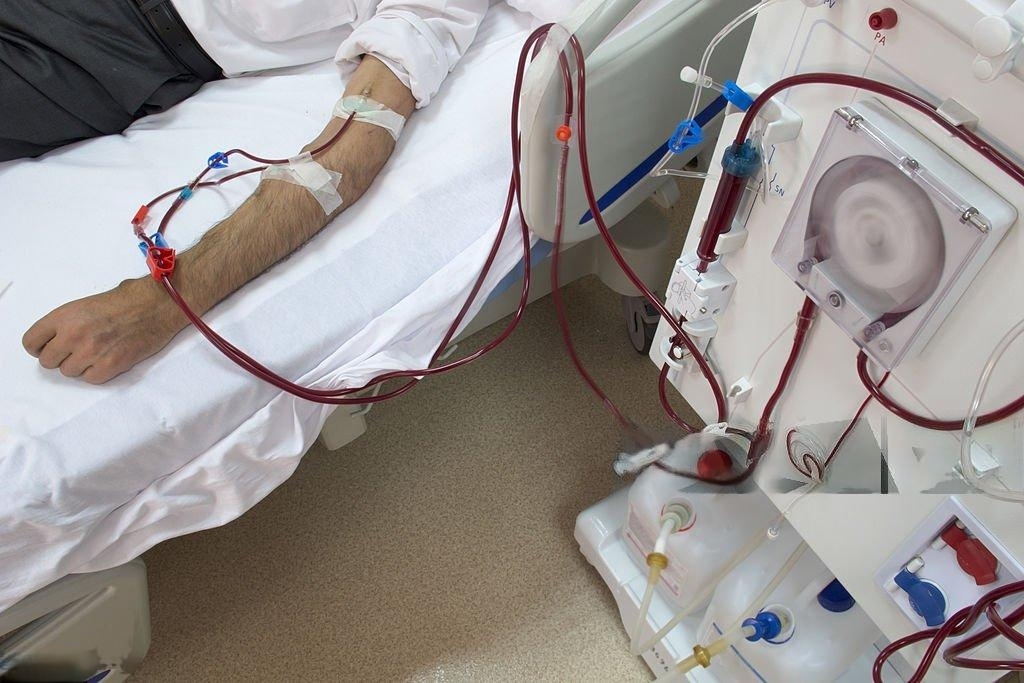What Is An Arteriovenous Fistula Aneurysm In Dialyzed Patients?
An arteriovenous fistula (AVF) is a critical lifeline for patients undergoing hemodialysis, a procedure necessary for those with advanced kidney failure. Over time, the AVF can develop complications, one of which is an aneurysm. An arteriovenous fistula aneurysm occurs when a portion of the fistula weakens and enlarges, forming a bulge. This condition can become a significant concern for patients on dialysis, as it can affect blood flow, compromise the fistula’s function, and increase the risk of rupture or infection.

What is an Arteriovenous Fistula (AVF)?
An AVF is created surgically by connecting an artery directly to a vein, usually in the arm. This connection allows blood to flow rapidly through the vein, causing it to grow larger and stronger. This process makes it easier to access the vein repeatedly for dialysis sessions. A well-functioning AVF is essential for effective hemodialysis, but it requires careful management and monitoring over time.
What is an Arteriovenous Fistula Aneurysm?
An AVF aneurysm is a localized enlargement or bulging of the vessel wall within the fistula. It occurs when the pressure exerted by the high-volume blood flow causes a segment of the vessel to stretch, leading to thinning and weakening of the vessel wall. This bulging area, called an aneurysm, is susceptible to further expansion, which may compromise the fistula’s integrity and pose a risk of rupture or other complications.
Causes of AVF Aneurysms
Several factors can contribute to the development of an AVF aneurysm:
- Repeated Needle Sticks: Hemodialysis requires regular needle insertion into the AVF. Over time, these needle punctures can weaken the vessel wall, making it more prone to bulging.
- High Blood Flow: AVFs often experience high blood flow rates, which can place excess pressure on the vessel wall. If the vessel weakens, this pressure can lead to aneurysm formation.
- Age of the AVF: Long-term use of the fistula can increase the risk of aneurysm development. Older fistulas are more likely to exhibit wear and tear that leads to complications like aneurysms.
- Poor AVF Care: Inadequate care, such as failing to rotate needle sites or using improper techniques, can accelerate damage to the fistula.
- Underlying Health Conditions: Factors like hypertension or vascular diseases can increase the likelihood of aneurysm formation in AVFs.
Symptoms and Diagnosis
While some AVF aneurysms are asymptomatic and discovered during routine examinations, others may present noticeable symptoms, including:
- Visible Bulging: The most obvious sign of an aneurysm is a visible, often pulsating, bulge over the fistula site.
- Tenderness or Pain: Patients may experience discomfort or pain in the area of the bulging aneurysm.
- Changes in Blood Flow: Some patients may notice that their dialysis sessions become less effective, as the aneurysm can affect the blood flow through the AVF.
- Skin Changes: The skin overlying the aneurysm may become thinner, discolored, or shiny, increasing the risk of rupture.
Diagnosis of an AVF aneurysm typically involves a physical examination by a healthcare provider, often supplemented by imaging studies like Doppler ultrasound to assess the size and structure of the aneurysm and the overall blood flow through the fistula.
Complications
The primary concern with an AVF aneurysm is the risk of rupture, which can lead to life-threatening bleeding. Other potential complications include:
- Infection: Aneurysms, especially those with thin or compromised skin, can become infected. An infection may lead to abscess formation and require immediate medical intervention.
- Thrombosis (Clotting): Changes in blood flow due to the aneurysm can increase the risk of clot formation within the fistula, which can block the AVF and make dialysis impossible.
- Skin Erosion: The skin over the aneurysm may become so thin that it breaks down, leading to exposure of the vessel, which is a medical emergency.
Treatment Options
Treatment for an AVF aneurysm depends on the size, location, and severity of the aneurysm, as well as the patient’s overall health and dialysis needs. Options include:
- Monitoring: Small, stable aneurysms may only require regular monitoring. Patients are advised to report any changes in size or symptoms to their healthcare provider promptly.
- Surgical Repair: If the aneurysm is large, painful, or at risk of rupture, surgical intervention may be necessary. The procedure typically involves either repairing the affected area or creating a new AVF at a different site.
- Ligation and Creation of a New AVF: In severe cases, particularly if the aneurysm poses a high risk of rupture or has compromised the function of the AVF, the current fistula may need to be tied off (ligated), and a new one created in a different location.
Prevention and Care
Preventing AVF aneurysms largely revolves around proper care and maintenance of the fistula. Some important strategies include:
- Rotating Needle Sites: Avoiding repeated needle insertions in the same area reduces localized damage to the vessel wall.
- Using the Right Needle Size: Ensuring that the needle used for dialysis is the appropriate size for the fistula helps to minimize trauma.
- Regular Monitoring: Frequent check-ups with a vascular surgeon or nephrologist can help detect aneurysms early before they become problematic.
Conclusion
An arteriovenous fistula aneurysm is a serious condition that can compromise the effectiveness of dialysis and pose significant health risks. Early detection, appropriate care, and timely treatment are essential in preventing complications and preserving the functionality of the AVF. For dialysis patients, regular monitoring and communication with their healthcare team are key to maintaining the health of their fistula and avoiding the development of aneurysms.


